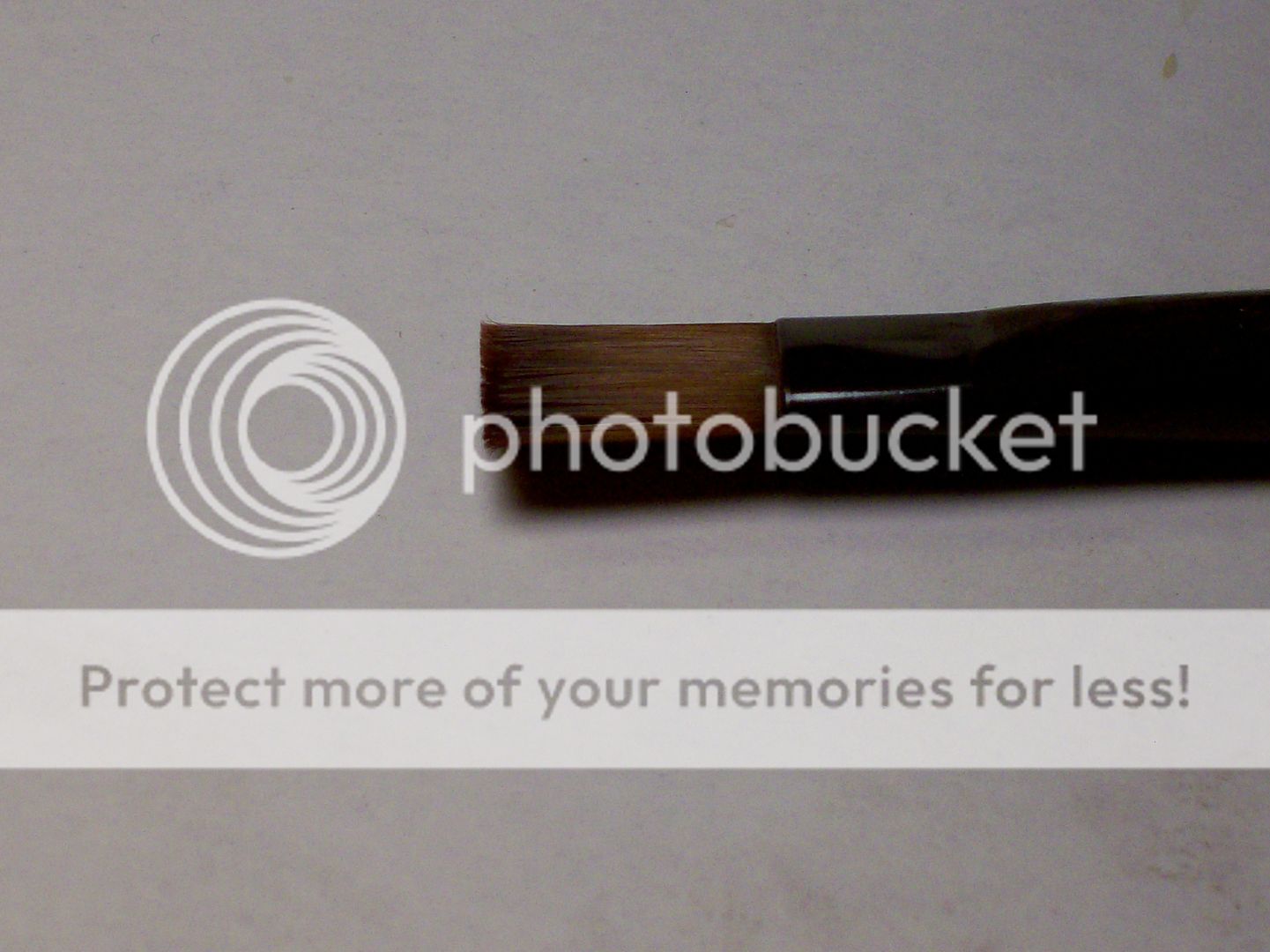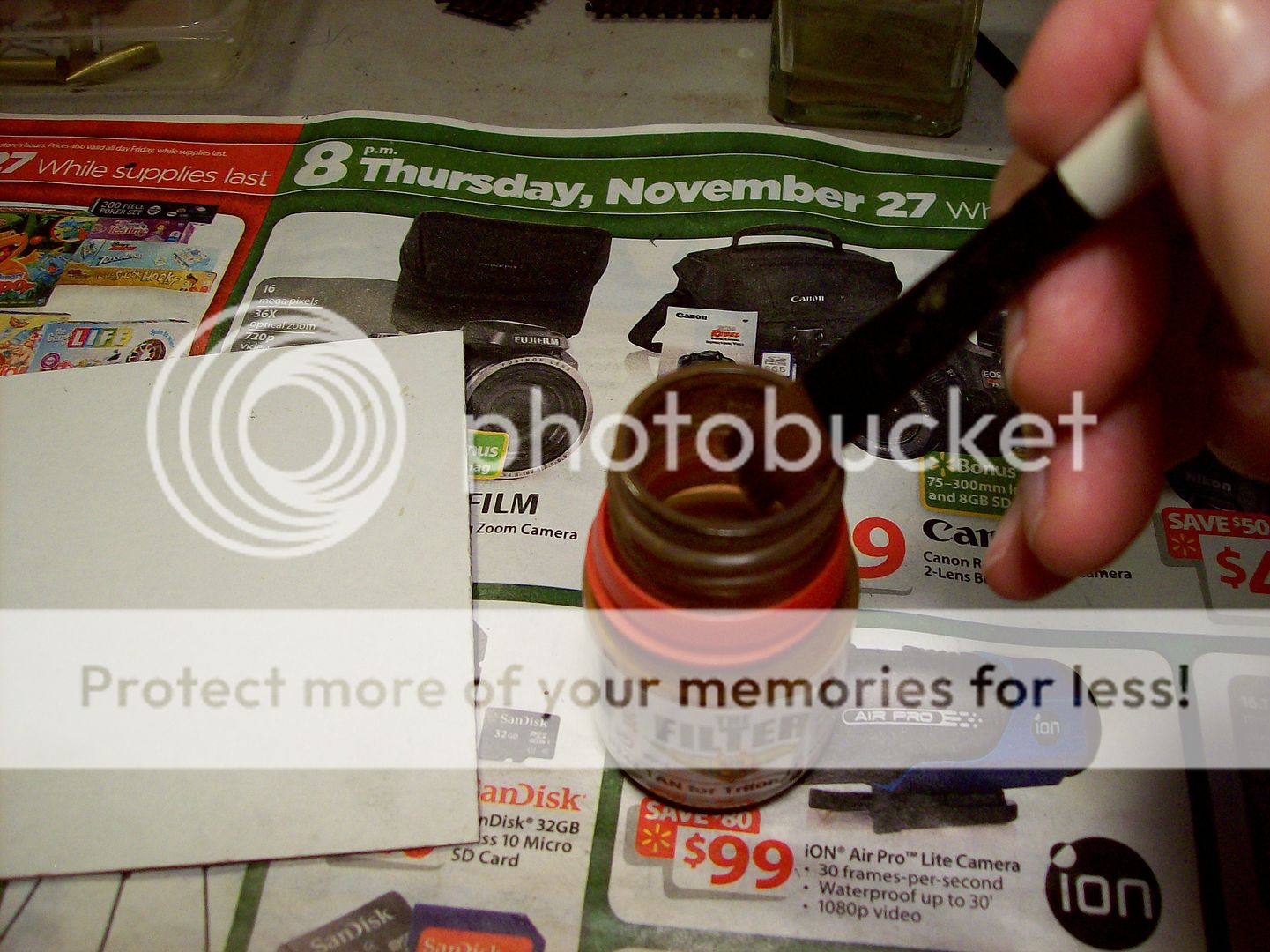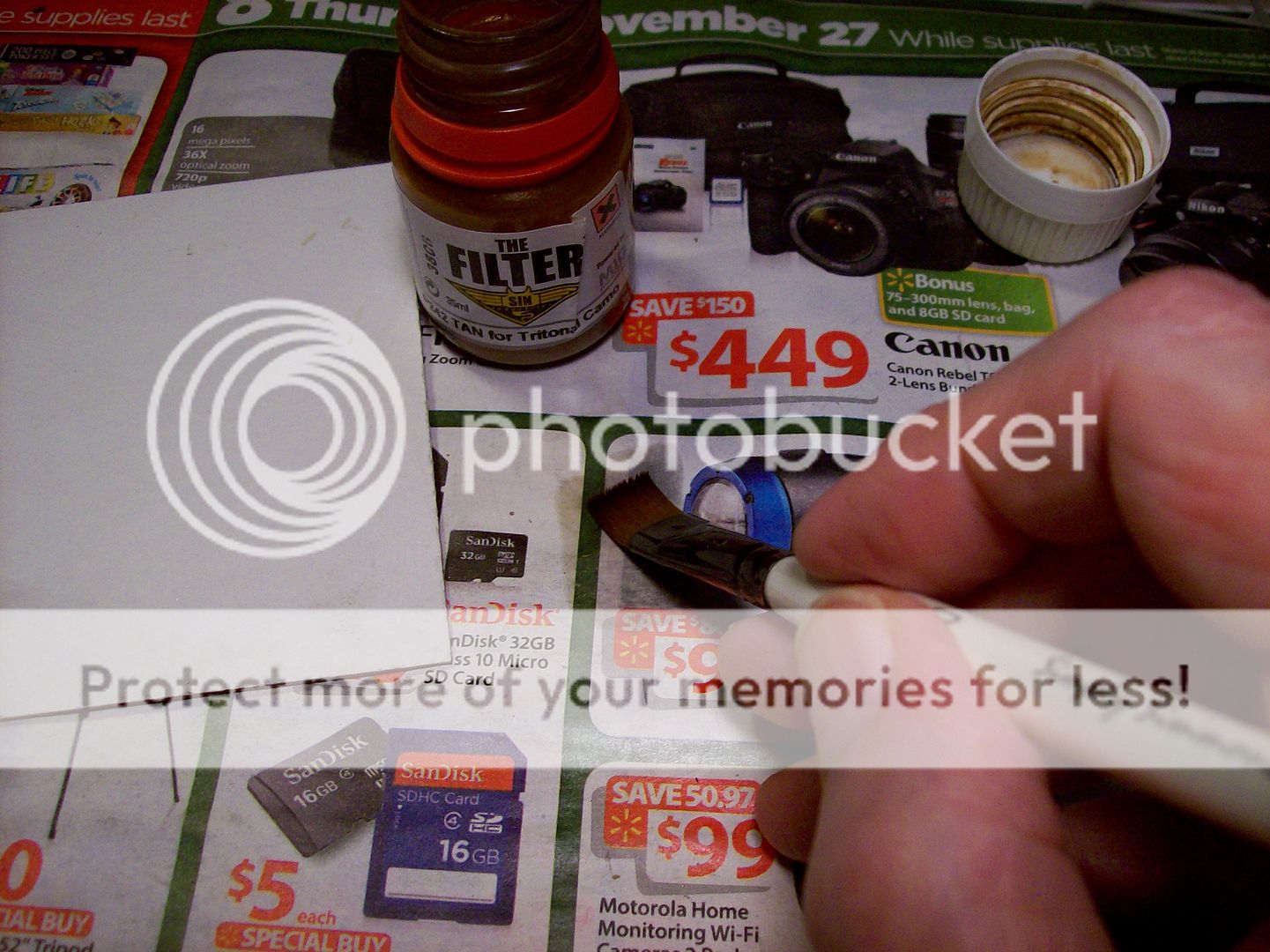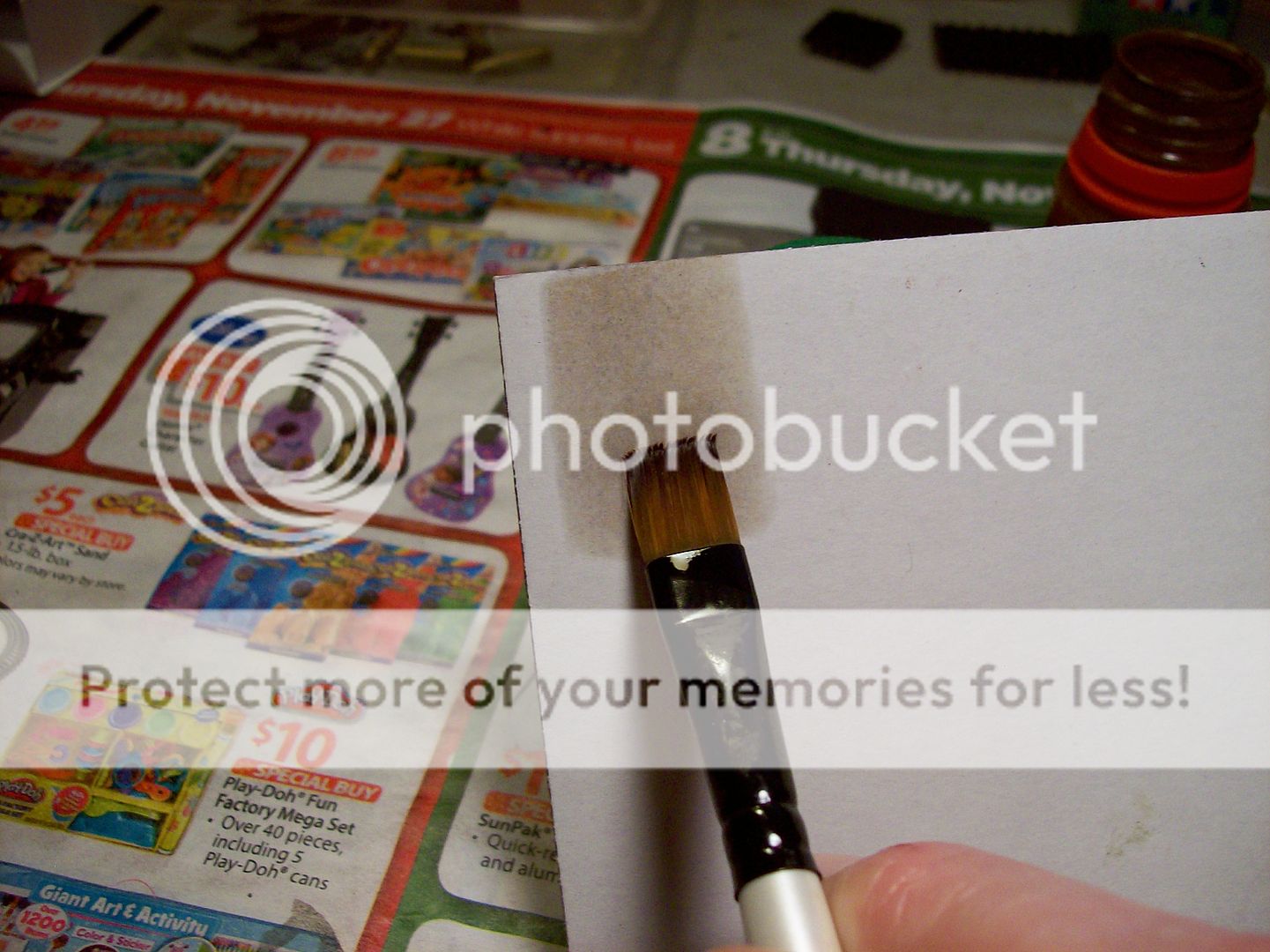OK Mike lets see if I can make this as clear as I can. :idonno
First off this technigue is NOT a ONE coat process it's a build up of pigment layers.
You'll need different sizes of flat sharp edge brushes in order to get in and around the details,I use about three widths to do this.

Shake the bottle of filter well so the pigment is in suspension,dip your brush in and then wipe the excess off on the lip of the bottle.

There is still too much filter on your brush so lightly wipe the brush on so newspaper,you want the brush to still be damp and still holding the pigments.

Doing a section at a time pull your brush down the surface leaving a film of filter,the longer the stroke the better and with a single pass. Move over where your next pass will just over lap the first,keep doing this until your brush ceases to leave a solid fluid brush pass.

I used a piece of white card so you can see that you're not leaving much pigment on the surface.
Repeat your brush loading as before and continue applying the filter until you've covered your model with a SINGLE coat.
Next I take a hair dryer on low heat and force dry what I just put on.
Repeat all the above process again and again until you're happy with the results. Depending on the color of the filter some colors require multiple coats were as say the Blue Gray for early gray schemes are pretty strong and you need only a couple of coats.
"Remember layering is the key."
You're not painting the model you're just altering the color or colors to add depth and variation.
After you're happy with the results let it dry for a couple of days more before applying your clear coat for decals and washes.
Any questions Mike?
Uncle Tony

ldguy







 ,that's when I looked for some HELP. I had a heck of a time getting it off before I could start over.
,that's when I looked for some HELP. I had a heck of a time getting it off before I could start over.
